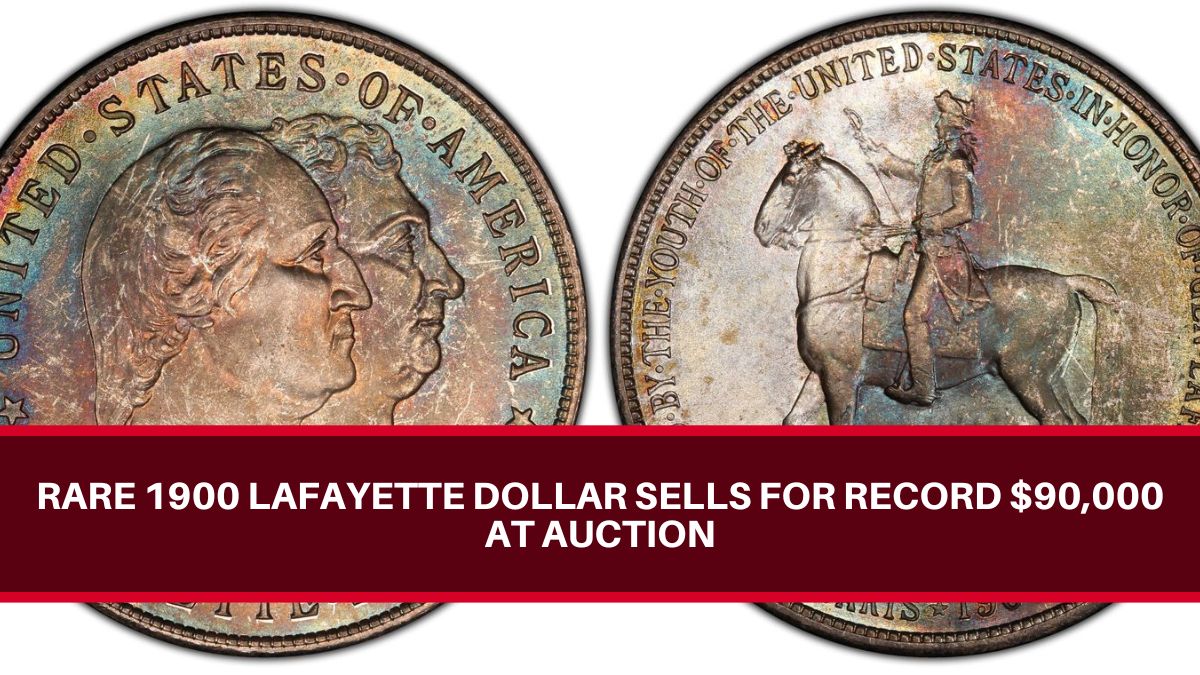The 1900 Lafayette Dollar is a captivating piece of American numismatic history. This commemorative coin, featuring both President George Washington and the Marquis de Lafayette, holds a special place in coin collections. This guide will help you understand the history, varieties, market data, and specifications of this unique dollar.
History of the 1900 Lafayette Dollar
The Lafayette Dollar was issued to honor the Marquis de Lafayette’s contributions to the American Revolution. Authorized by Congress on March 3, 1899, it was the first commemorative dollar coin and remains unique in the classic commemorative series until modern times.
Table 1: Key Historical Details
| Detail | Description |
|---|---|
| Authorized By | Congress, March 3, 1899 |
| Purpose | Fundraising for Lafayette Monument in Paris |
| Minting Date | December 14, 1899 (anniversary of Washington’s death) |
| First Sale Price | $2 each |
Design and Production
The coin’s design features Lafayette on horseback and President Washington’s bust. Created by Paul Bartlett and approved by the Fine Arts Board of Paris, these portraits are modeled after famous sculptures. The coin was first offered for $2, with the Mint deciding to present the first coin as a diplomatic gift.
Table 2: Design Elements
| Side | Design | Designer |
|---|---|---|
| Obverse | Lafayette on horseback | Paul Bartlett |
| Reverse | Bust of George Washington | Paul Bartlett |
| Inspiration | Busts modeled after Jean-Antoine Houdon (Washington) and Jacques Counois (Lafayette) | – |
Varieties of the 1900 Lafayette Dollar
In the 1920s, George H. Clapp identified different die varieties of the Lafayette Dollar. These were categorized into several types, including:
Table 3: Varieties and Discoveries
| Variety | Description | Discoverer |
|---|---|---|
| 1A, 1B | Early die varieties | Howland Wood |
| 2C, 3D | Additional die variations | Howland Wood |
| 4E | Rare die variety discovered later | Frank DuVall |
Market Data and Noteworthy Specimens
The Lafayette Dollar has been a popular collectible, with prices fluctuating based on quality and rarity. Noteworthy sales include:
Table 4: Noteworthy Sales
| Grade | Sale Price | Auction Date | Auction House |
|---|---|---|---|
| PCGS MS67 | $90,000 | September 2022 | GreatCollections |
| NGC MS67 | $76,375 | May 2023 | Legend Rare Coin Auctions |
| PCGS MS67 | $66,700 | January 2004 | Heritage Auctions |
Coin Specifications
Understanding the specifications of the 1900 Lafayette Dollar is crucial for collectors. Here’s a breakdown:
Table 5: Coin Specifications
| Specification | Details |
|---|---|
| Country | United States of America |
| Year of Issue | 1900 |
| Denomination | One Dollar (USD) |
| Mintmark | None (Philadelphia) |
| Alloy | .900 Silver, .100 Copper |
| Weight | 26.73 grams |
| Diameter | 38.10 mm |
| Edge | Reeded |
| Obverse Designer | Charles E. Barber |
| Reverse Designer | Charles E. Barber |
| Quality | Business Strike |
Conclusion
The 1900 Lafayette Dollar stands as a significant piece of American coinage history. Its unique design, historical context, and varied collector interest make it a prized possession for numismatists. Understanding its history, varieties, and market trends can enhance both appreciation and investment in this remarkable coin.
FAQ’s
What is the 1900 Lafayette Dollar?
The 1900 Lafayette Dollar is a commemorative coin issued to honor the Marquis de Lafayette and President George Washington. It was the first commemorative dollar coin released by the United States and was authorized by Congress to support the construction of a Lafayette Monument in Paris.
How can I identify different varieties of the 1900 Lafayette Dollar?
There are several die varieties of the 1900 Lafayette Dollar, including types discovered by George H. Clapp and later by specialists like Frank DuVall. These varieties are identified by differences in the coin’s design and are categorized by numbers and letters, such as 1A, 1B, and 4E.
What is the value of a 1900 Lafayette Dollar?
The value of a 1900 Lafayette Dollar varies based on its grade and rarity. High-quality specimens, especially those graded PCGS MS67, can sell for tens of thousands of dollars. Auction prices can range from $30,000 to over $90,000 depending on the coin’s condition and historical significance.

